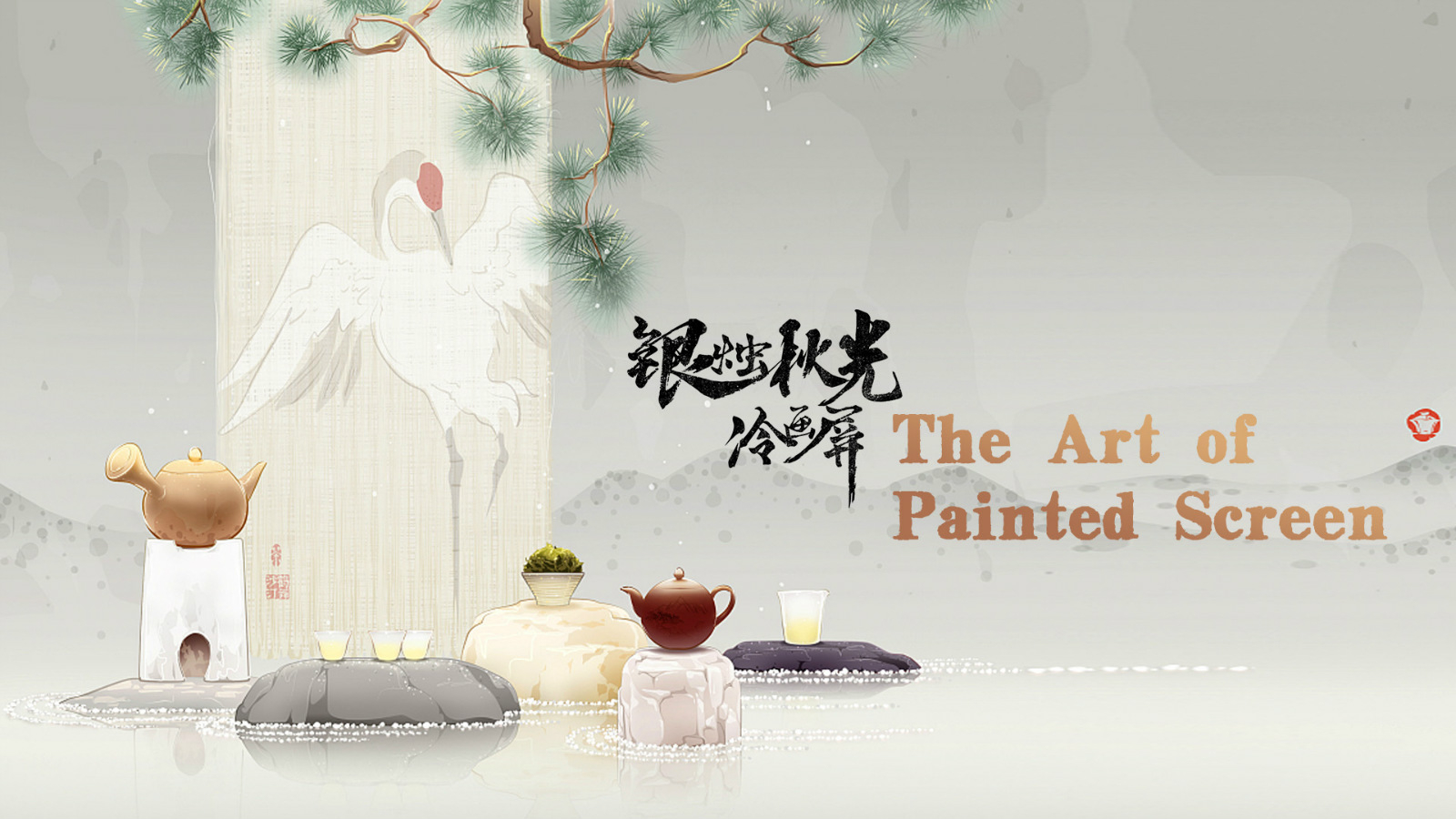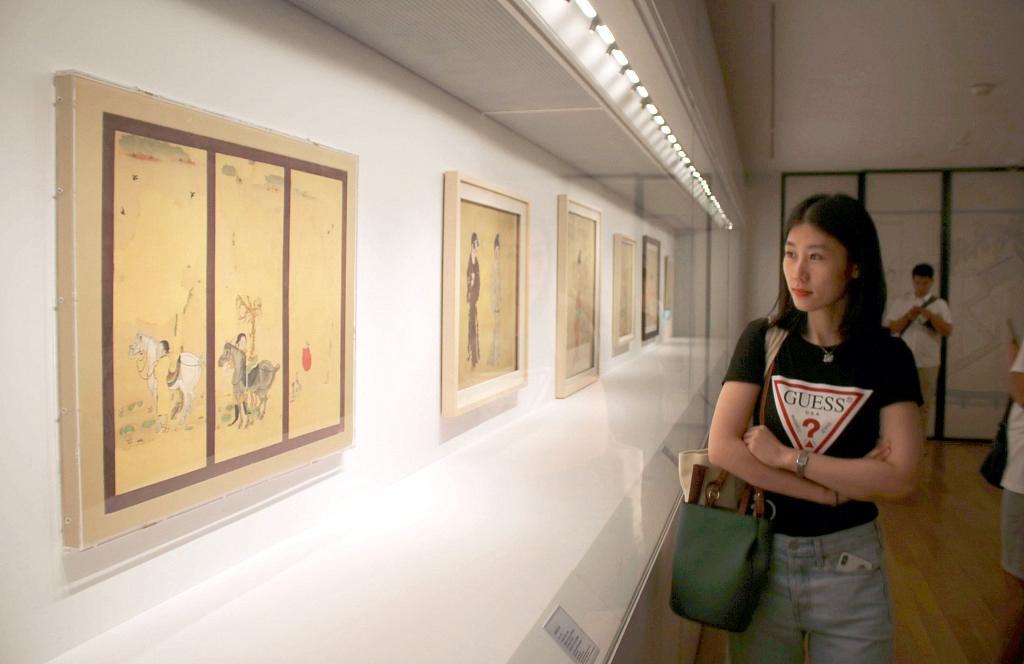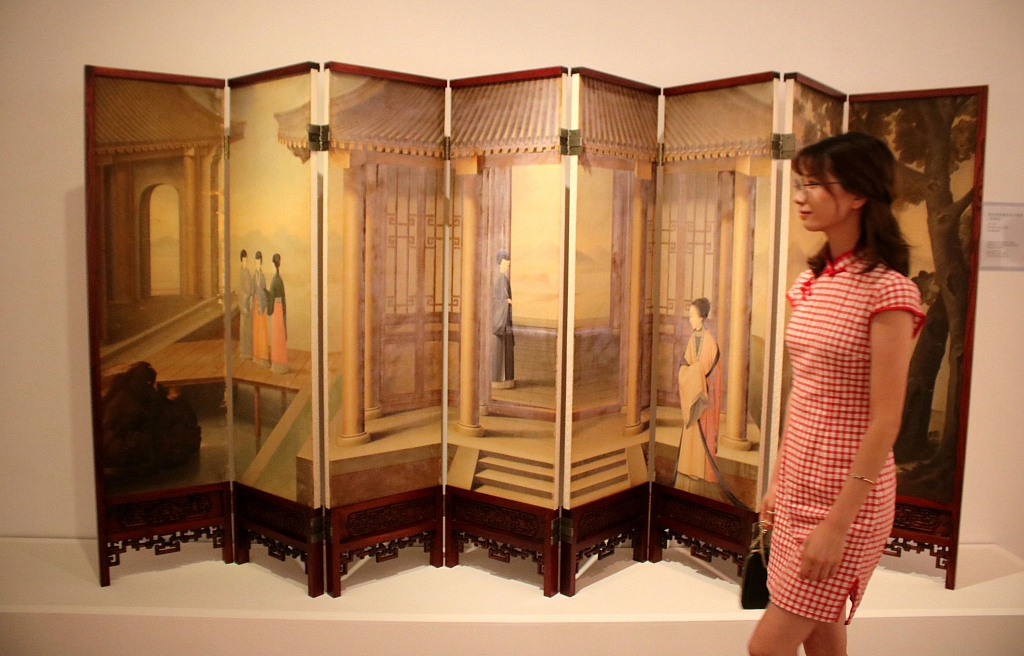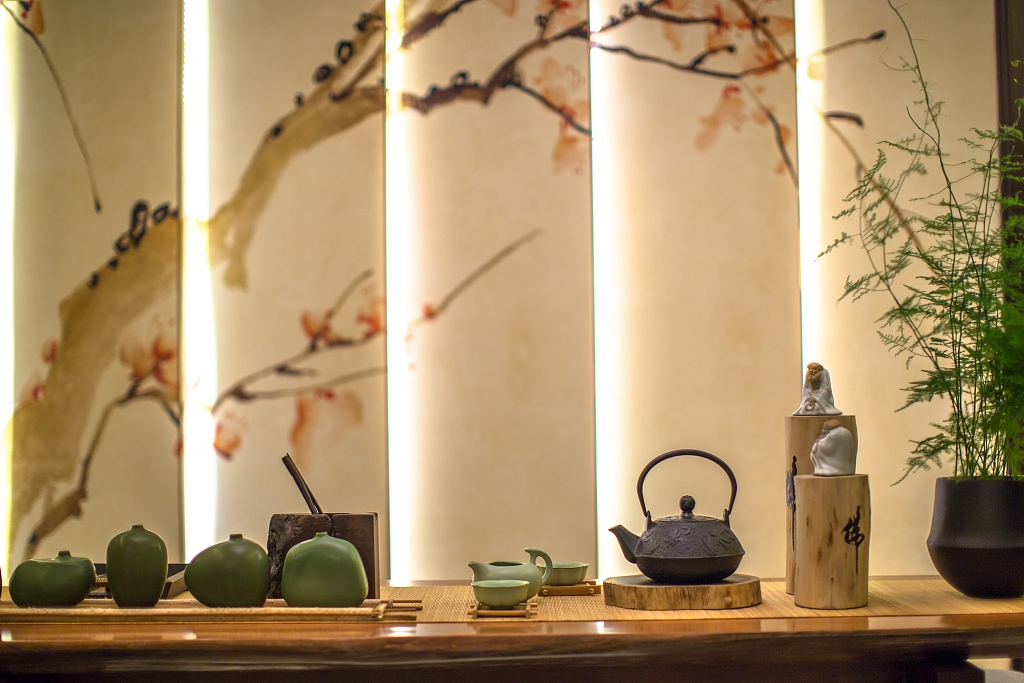

Today, Chinese museums are not satisfied with just showcasing their collections anymore. Instead, they tend to be trendsetters.
Suzhou Museum opened a new exhibition on Friday, which is themed around "painted screens," a traditional type of furniture that is widely used in ancient China. By using such a topic, the exhibition combined dynamic art forms such as calligraphy, paintings, architecture and sculpture.
According to Wu Hong, the exhibition planner, it was based on academic research themed around screens. The artistic collections of 14 museums of different countries and areas are on display.

A visitor views paintings on screens at Suzhou Museum. /VCG Photo
The Palace Museum, School of the Art Institute of Chicago, Hunan Museum and Shanghai Museum are among the contributors to the exhibition. Besides, the show also includes nine modern artists seeking to integrate ancient and modern art.
"I have two goals in holding the exhibition. Firstly, I want to bring together the Chinese art of paintings and the art of architecture and burial customs. Secondly, using the painted screens to bring together the ancient art of China with modern art and see whether the two could communicate with each other," said Wu Hong.

A visitor to the exhibition at Suzhou Museum. /VCG Photo
The art of painted screen in China
The earliest records of screens appeared in the West Zhou Dynasty (1046 B.C. – 771 B.C.), and at that time, they were used only by the emperors as a symbol of power and status.
Later, the screens gradually spread into the whole society, and were used for different functions, such as windproofing, separating areas and decoration. Varieties of screens shown up, made of different materials such as wood, crystal, jade and other precious items. There were also different structures, such as foldable and vertical screens.
Decorations became indispensable. Techniques such as inlay, sculpture, embroidery and paintings were all applied. In the relics, the element of screens could be spotted everywhere, including renowned paintings.

A painted screen stands behind a table. /VCG Photo
In the paintings from Sui and Tang Dynasty (581 – 907), the figures in the paintings were usually seen sitting in rooms or on beds surrounded by painted screens of different sizes. Even the decorations of the screens in those paintings were vividly depicted.
In fact, the influence of the screens is not limited to the paintings or furniture, nor is it limited to ancient times. In Chinese architecture, the idea of screens has been widely applied to form multiple layers of sceneries.
Touring around either the Suzhou Gardens or the Forbidden City, such application of screens could be seen everywhere. It has become part of the Chinese aestheticism.
Today, even though such delicate screens have retreated from people’s daily lives, the art has continued to inspire designers in interior decoration, architecture and furniture designing.
The exhibition lasts until December 6.
Cover image: Li Yueyun

Copyright © 2018 CGTN. Beijing ICP prepared NO.16065310-3
Copyright © 2018 CGTN. Beijing ICP prepared NO.16065310-3